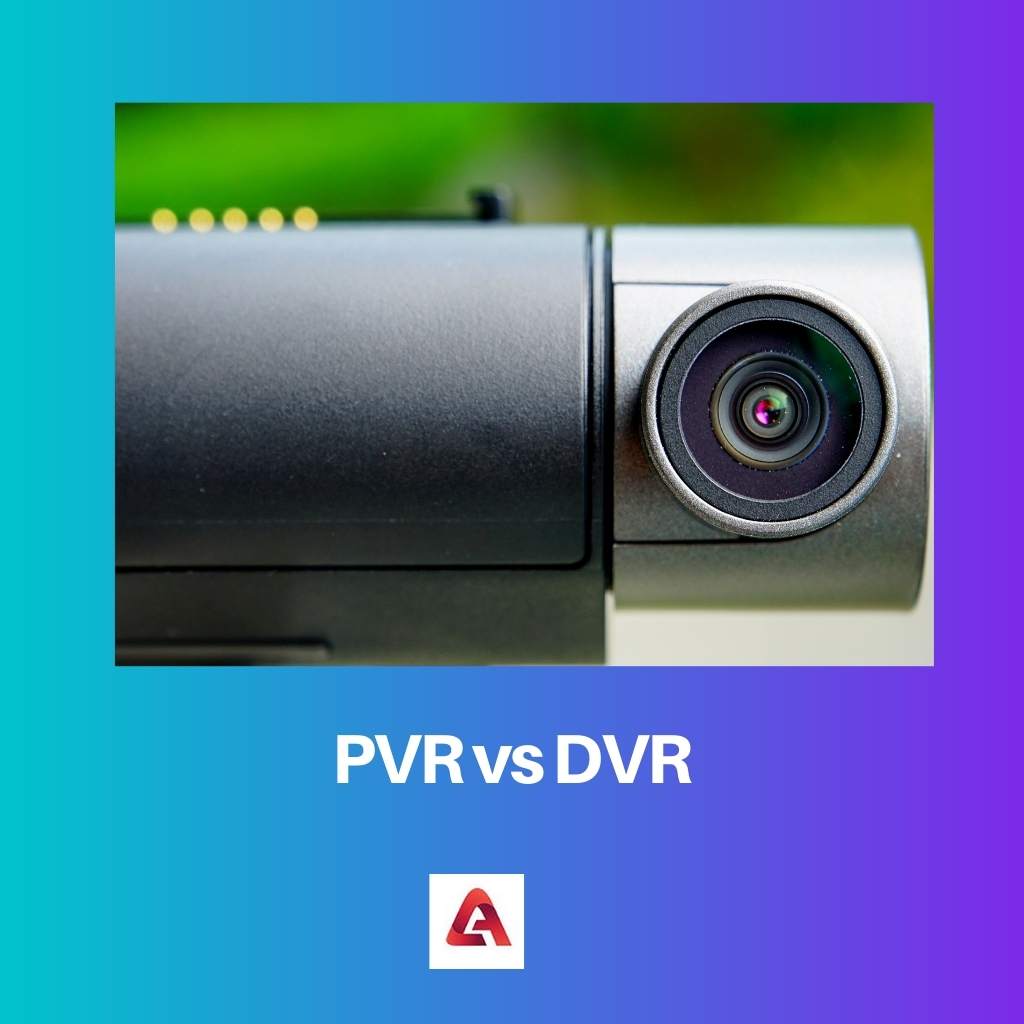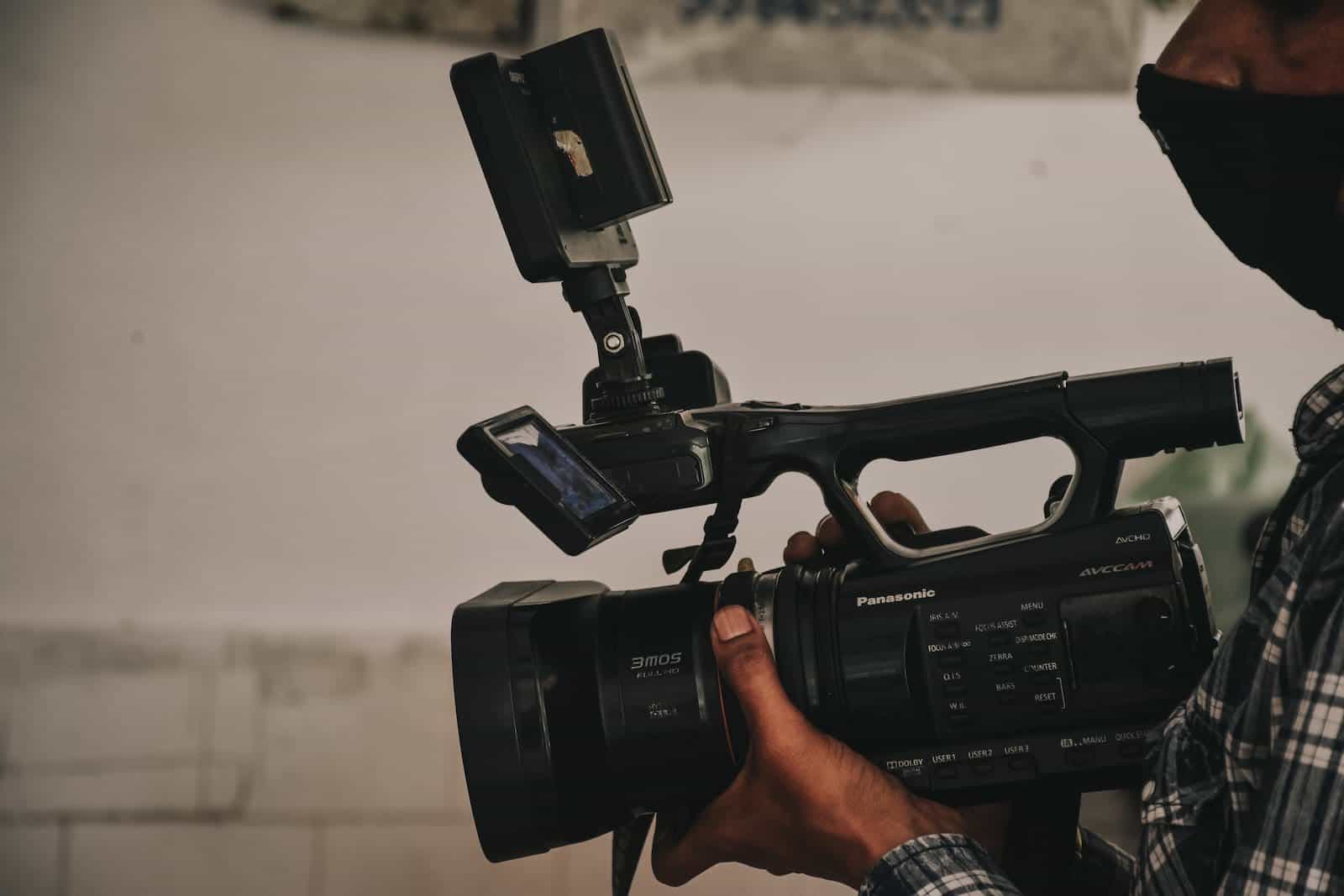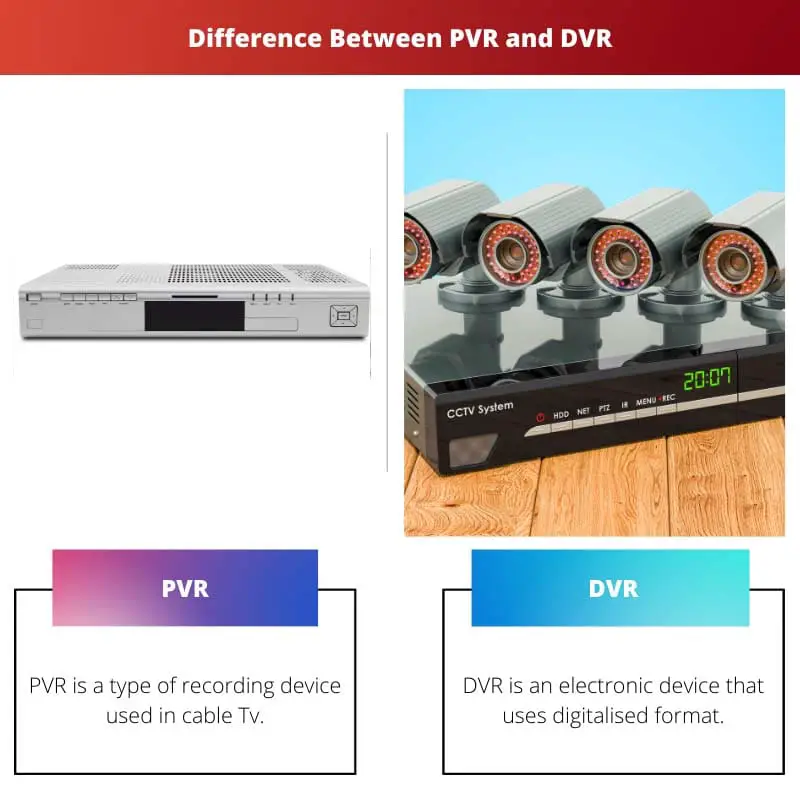The function of a VCR is to record analog audio and videos from television or any other devices and then play it as a recording so that they can be seen multiple times.
Key Takeaways
- PVR (Personal Video Recorder) and DVR (Digital Video Recorder) record and store TV programs for later viewing.
- PVR is used in cable or satellite TV systems, while DVR is used in over-the-air (OTA) TV systems.
- PVR can record multiple programs simultaneously, while DVR can record one program at a time.
PVR vs. DVR
PVR (Personal Video Recorder) is a device used for recording programs that can be viewed later. This device is for personal use. A person can select TV programs of his/her own choice. Analog and digital signals are used by PVR. DVR (Digital Video Recorder) is used for TVs. DVRs use digital signals for recording.

The primary function of a PVR was to record television programs and then replay them, but there was a slight time difference with the original program.
DVR stands for Digital Video Recorder. It is a digital device that records videos digitally, unlike VCRs that use analog.
Comparison Table
| Parameters of Comparison | PVR | DVR |
|---|---|---|
| Full-Form | PVR stands for Personal Video Recorder. | DVR stands for Digital Video Recorder. |
| Definition | PVR is a type of recording device used in cable Tv. | DVR is an electronic device that uses digitalized format. |
| Launched | It was launched in 1997. | It was launched in 1999. |
| Signal | It uses both analog and digital signals. | It uses only digital signals. |
| Storage | It can store data of 160 GB and can be expanded to 500 GB. | It can store data of 2 TB and has no limitations. |
What is PVR?
PVR is a better version of Video Cassette Recorders and was invented by Anthony Wood in the year 1997, who is the founder of ReplayTV.
PVRs come with cable TV sets because they can only be used in television sets. It can use both analog and digital signals to record audio and videos.
Camcorders, which Sony first launched in 1983, are the earliest form of Personal Video recorder that came in handy and easy to use, unlike video recorders, which were large and heavy to move.

What is DVR?
DVR, a more advanced form of PVR, began to rule the television industry in 1999 when Replay TV and TiVo launched their first DVR sets. Although TiVo became more successful commercially, selling 1 lakh units in the same year.
DVRs were widely used by professional filmmakers and production houses for recording videos as it doesn’t have a limit like VCRs and PVRs. With the advent of DVRs, time-shifting has become more accessible and more convenient as it can pause live TV, chase playback, instant replay and skip the advertisement, etc.
DVRs also use the format MPEG to compress video digitally. Recording the videos on the setup box and viewing them later has become a necessary part of modern times as it gives complete control to the consumers.

Main Differences Between PVR and DVR
- PVR uses both analog and digital signals. DVR uses only digital signals.
- PVR can store data of 160 GB and can be expanded to 500 GB with external storage. DVR can store 2 TB of data and has no limitations, which makes it so convenient.

- https://ieeexplore.ieee.org/abstract/document/5735499/
- https://ieeexplore.ieee.org/abstract/document/4588028/